Ferdinand Hodler – The Painter Who Revolutionized Swiss Art
Ferdinand Hodler was one of the principal figures of 19th-century Swiss painting. Hodler worked in many styles during his life. Over the course of...
Louisa Mahoney 25 July 2024
In 19th-century France, Marie-Rosalie (Rosa) Bonheur was possibly the richest and most famous female artist. She boldly pioneered both in her artistic pursuits and personal life. Later, her work went out of fashion, and her name faded into obscurity. Let’s revive her legacy and bring recognition to her contributions once again!
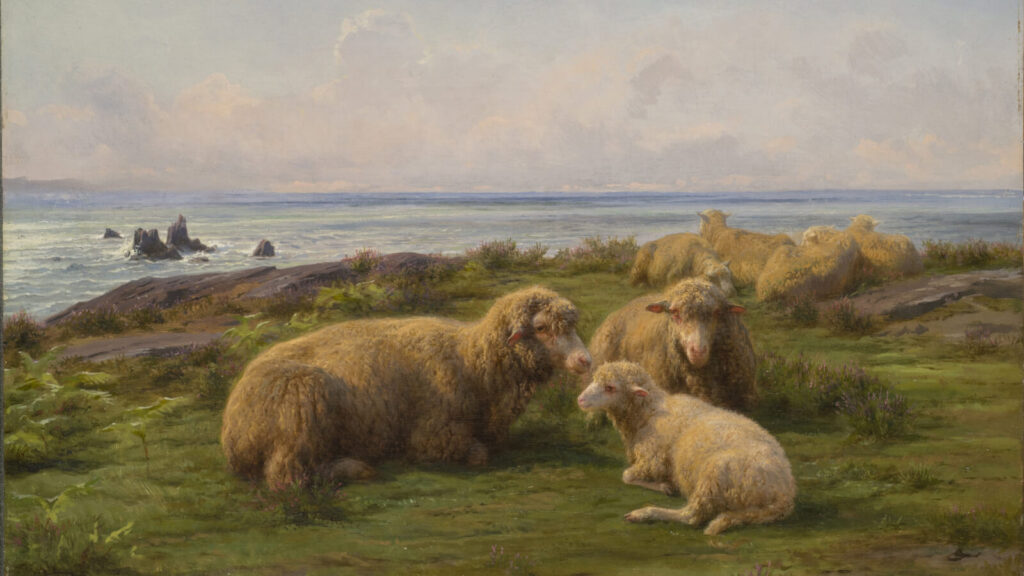
Rosa Bonheur, Sheep by the Sea, 1865, National Museum of Women in the Arts, Washington DC, USA.
From the earliest days of childhood, her family noticed her drive and self-belief. Her parents (a painter and a piano teacher) were involved with a Parisian utopian socialist community where class and gender distinctions were challenged. How many other female artists might we have in art history today, if all young girls had such support?
To my father’s doctrines I owe my great and glorious ambition for the sex to which I proudly belong and whose independence I shall defend until my dying day.
Quoted in the Rosa Bonheur’s Paris exhibition at the Denver Art Museum, 2017.
Born in 1822 in Bordeaux, in South-West France, Rosa Bonheur was one of four artistic siblings. Allowed the freedom to explore life and art according to her own impulses, Bonheur created unique art and even an alternate family structure. Described as an unruly tomboy by past art historians, today we can see Bonheur’s life choices in a clearer light. She spent her life in a devoted same-sex partnership.
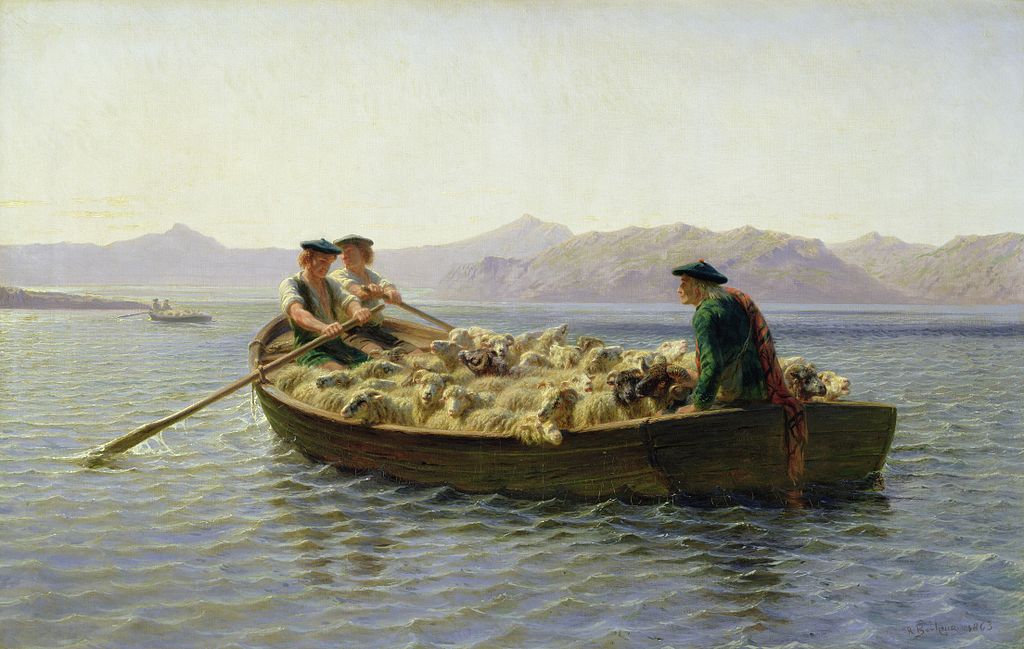
Rosa Bonheur, Changing Pastures, 1863, Hamburger Kunsthalle, Hamburg, Germany.
The Bonheur family struggled financially, and to add to their trauma, their mother died when Bonheur was just 11 years old. Buried in a pauper’s grave, something involving huge societal shame, it is said that Bonheur vowed to never marry and never have children. Instead, she devoted herself to the care of animals and the creation of artworks.
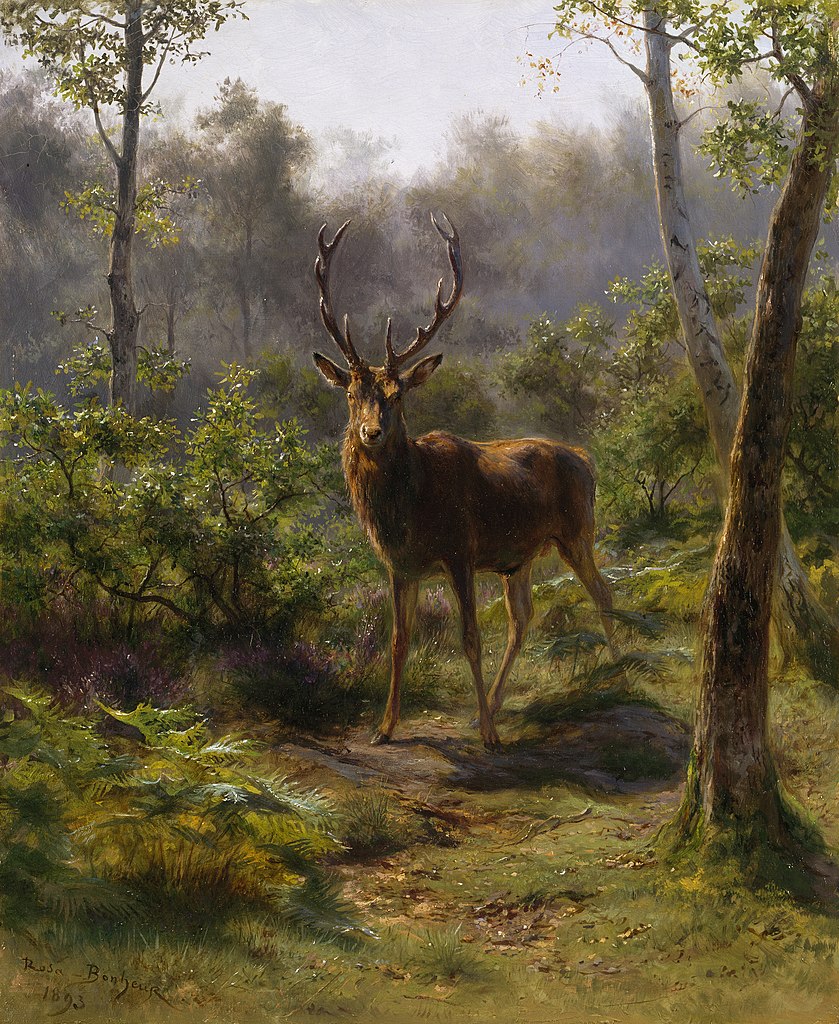
Rosa Bonheur, A Stag, 1893, National Gallery of Ireland, Dublin, Ireland.
At school, Bonheur showed great promise in art. She would visit the Louvre to copy paintings, and perhaps more importantly, she drew from life, creating paintings of animals with incredible movement. However, the school system did not suit this rebellious young woman – she was expelled from a number of schools, and her art was largely self-taught. Partly linked to the tradition of landscape painting, partly linked to the Realist tradition, and partly influenced by the en plein air practices of the Barbizon School, she was, however, unlike any other artist of the period.
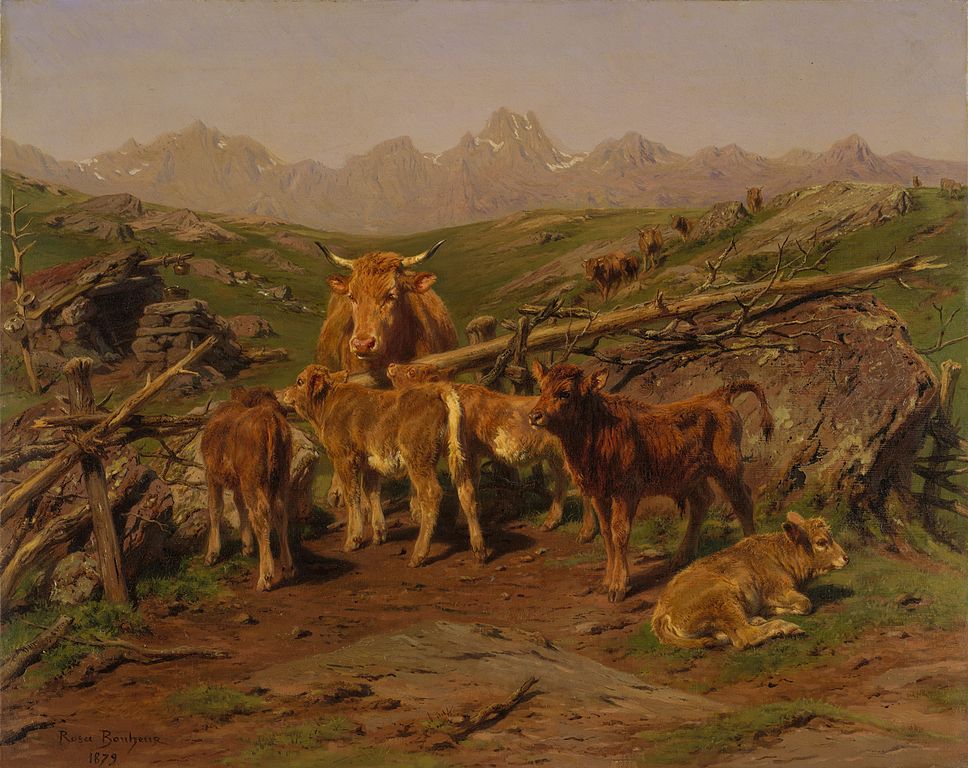
Rosa Bonheur, Weaning the calves, 1879, Metropolitan Museum of Art, New York, NY, USA.
Bonheur became the leading animal painter of her time. Her work was much sought after in the USA and Britain – art collectors, celebrities and even Queen Victoria bought her work. She was the very first woman to receive the Legion of Honour, the highest order of merit awarded by the French government.
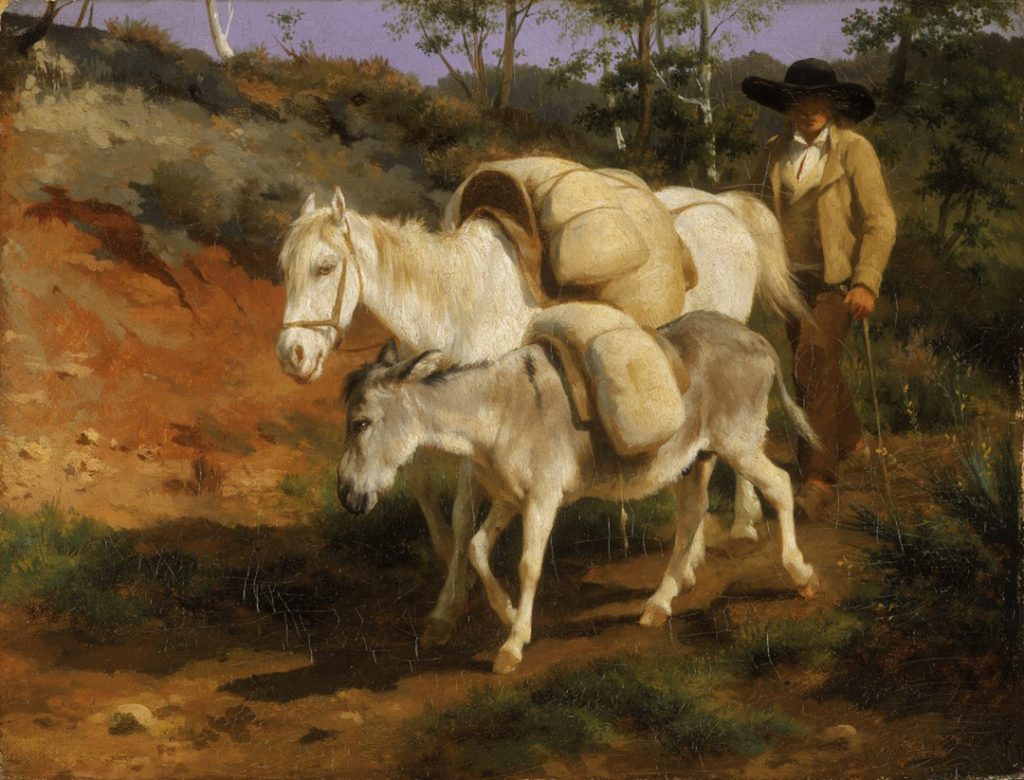
Rosa Bonheur, Le Retour du Moulin, 1847-1848, Liverpool Museums, Liverpool, UK.
Rosa Bonheur’s painting style was wholly unsentimental. She was known as an “animalier” (animal painter). Her animals seem ready to leap from the canvas – we can almost smell the mud and manure. She visited brutal slaughterhouses to study animal anatomy and viewed animals up close and personal in markets and zoos. She kept a large menagerie of animals, including horses, dogs, and even a lioness called Fathma. Her paintings tell easy-to-understand stories of the world around us, and the public absolutely loved them.
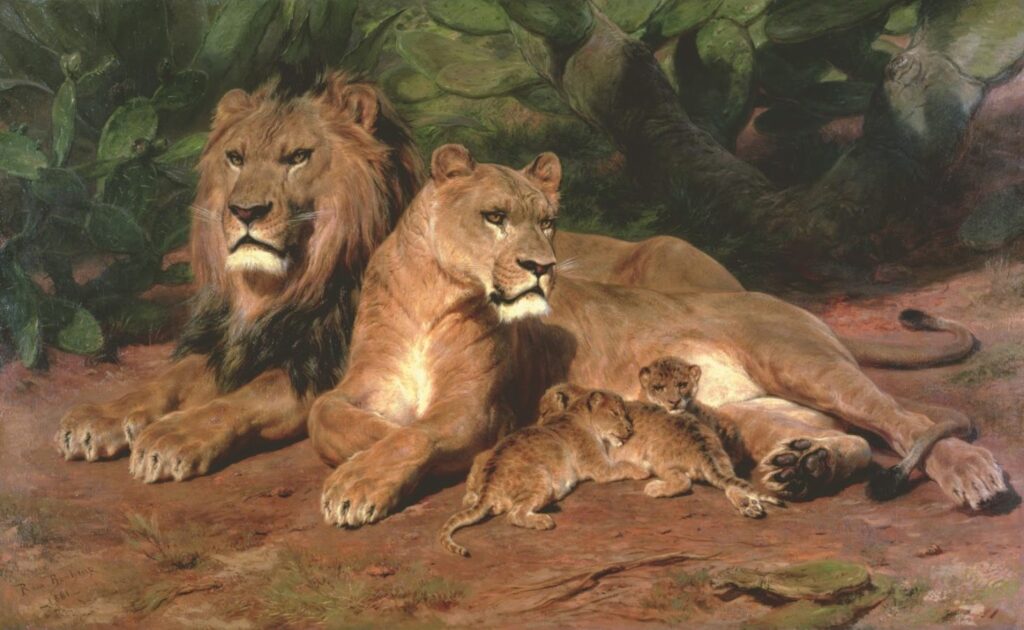
Rosa Bonheur, The Lion at Home, 1881, Ferens Art Gallery, Hull, UK.
Her largest and most famous painting, The Horse Fair, measures 8 feet tall by 16 feet wide. The painting was seen by Belgian art dealer Ernest Gambart. He bought the painting, took Bonheur on as a client, and her celebrity profile rose even higher. Her work was reproduced widely and eagerly collected by the middle classes.
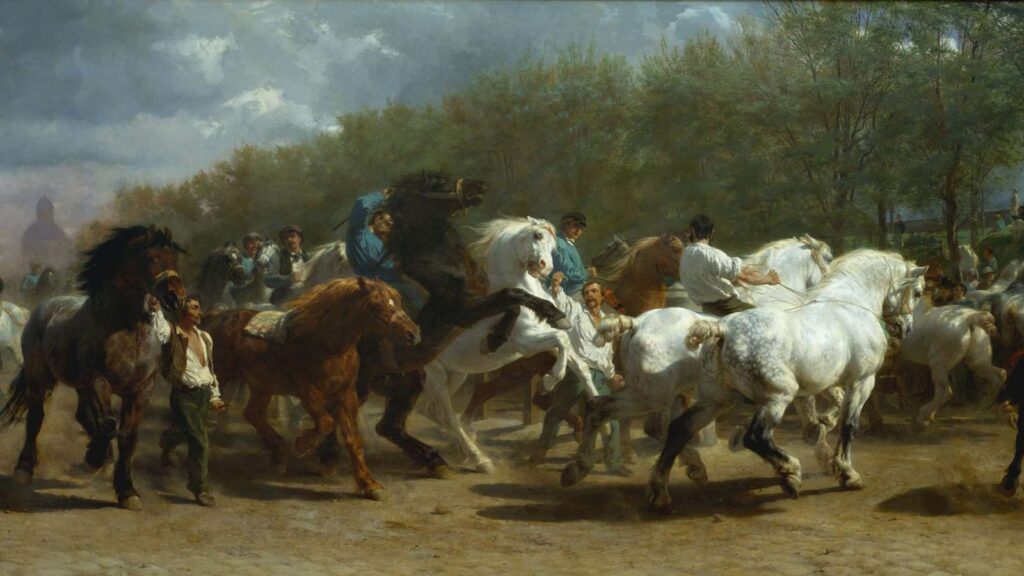
Rosa Bonheur, The Horse Fair, 1852-1855, The Metropolitan Museum of Art, New York, NY, USA.
Artist Édouard Dubufe painted a portrait of Bonheur, an interior scene where she stands next to a table. Bonheur was not quite content with the effect, and so Dubufe gave Bonheur permission to alter the portrait. Bonheur replaced the innocuous table with a giant thick-necked bull!
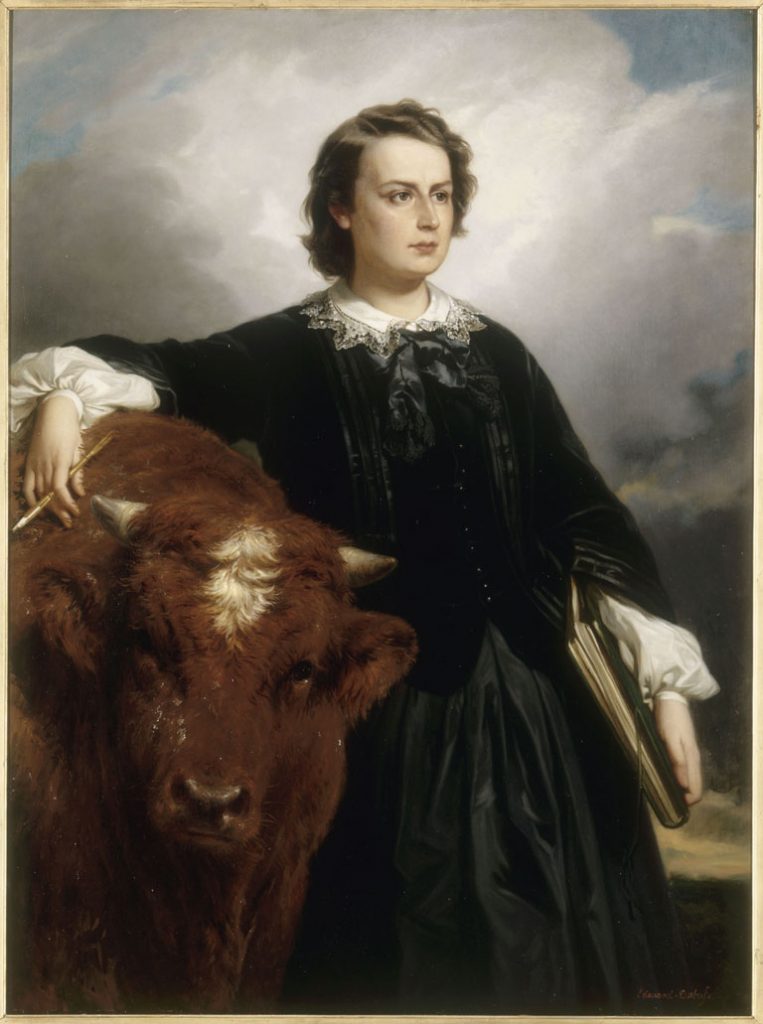
Édouard Dubufe, Portrait of Rosa Bonheur, 1857, Palace of Versailles, Paris, France.
Do we call this incredible woman a feminist? Absolutely! The revolutionary Paris Commune of 1871 discussed female-driven social and political reform, and the socialist community she grew up around would certainly recognise the term. Do we call her a lesbian? Her choice not to marry was clearly about maintaining her social and political freedom in 19th-century France, but she did have two long-term relationships with women. It is assumed that sexual, Sapphic love was a part of Bonheur’s relationships, but not proven. Certainly, there was deep friendship and love, and contentment. But her art was her one true love.
Art is a tyrant. It demands heart, brain, soul, body… Nothing less will win its highest favour. I wed art. It is my husband, my world, my life dream, the air I breathe. I know nothing else, feel nothing else, think nothing else.
Catherine Hewitt, Art is a Tyrant, the unconventional life of Rosa Bonheur, Icon Books, 2020
Can we call Bonheur a queer artist? Yes, because although Bonheur would not recognise that term in the modern, political way we use it now, she certainly questioned heterosexual gender norms. Her decision to wear men’s clothing was personal and practical – women’s clothing was, as she put it, “a constant bother.” Bonheur’s masculine clothing was a very visual statement of difference. And it required some effort. In 19th-century Paris, a woman needed a special permit to discard traditional female clothes.
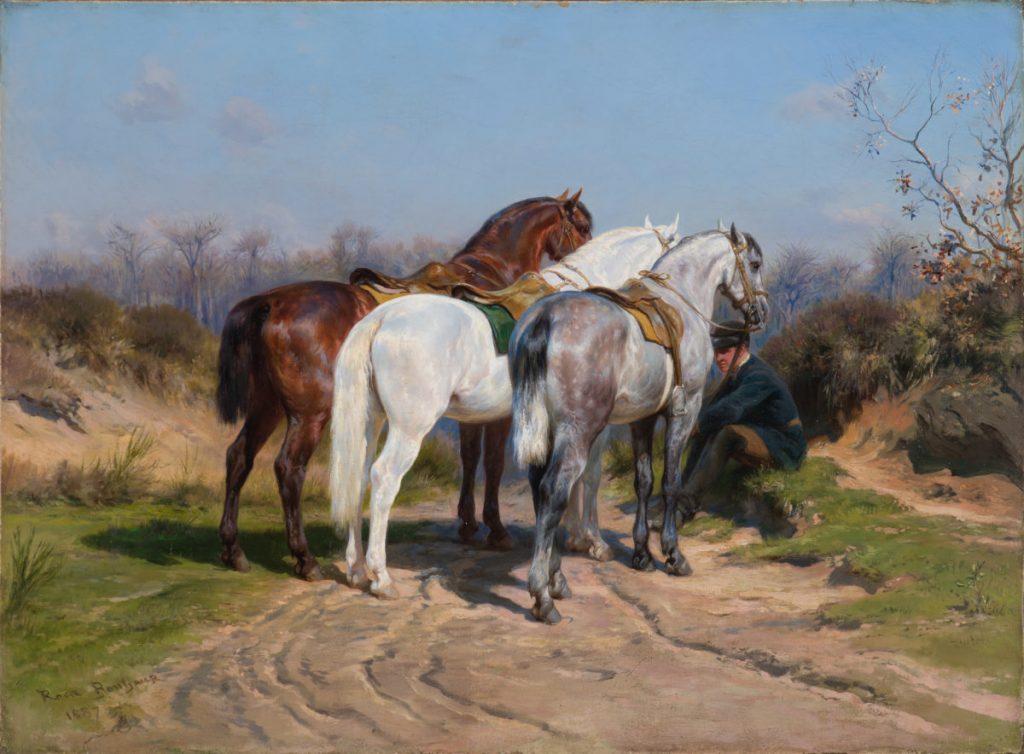
Rosa Bonheur, Relay Hunting, 1887, Saint Louis Art Museum, St. Louis, MO, USA.
We can be sure though, that Bonheur was a pioneer, a ground-breaker. She openly wore men’s clothing, she rolled her own cigarettes and smoked in public, and she wore her hair short. She was proud of herself, and her work and she demanded to be viewed as an equal to any male painter. Years before we had the Frida Kahlo Barbie, Bonheur had a porcelain doll created in her own likeness – complete with masculine clothes and cropped hair. What a marvellous example to the young girls of the day!
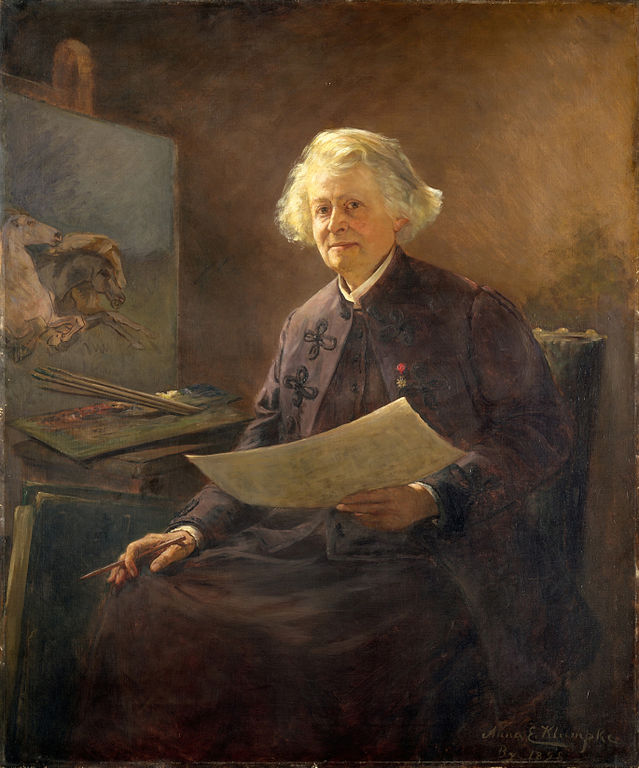
Anna Klumpke, Portrait of Rosa Bonheur, 1898, Metropolitan Museum of Art, New York, NY, USA.
This radical woman had two long-term same-sex relationships in her life. Her writings and diaries made this clear. Nathalie Micas was a childhood friend and fellow painter. They lived together for four decades until Nathalie died in 1889. Rosa then met American painter Anna Klumpke, and again, this was a lifetime companionship. Klumpe wrote a biography of Bonheur and established the Rosa Bonheur Memorial Art School for Women. All three women are buried together, held within the same cemetery plot. The headstone message is: “Friendship is divine affection.”
DailyArt Magazine needs your support. Every contribution, however big or small, is very valuable for our future. Thanks to it, we will be able to sustain and grow the Magazine. Thank you for your help!